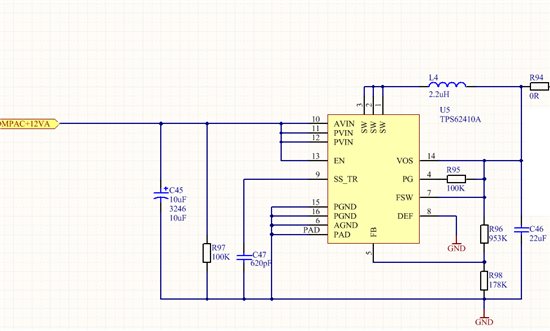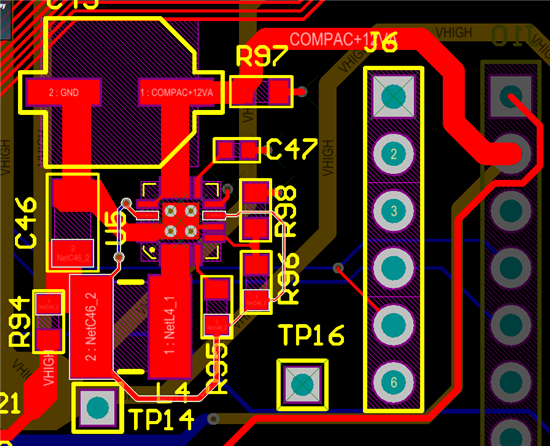Hello,
For a project we use the TPS62140a to convert a 12V DC input to 5V DC output. the load will draw a maximum current of 1.25A. The problem i'm facing is that large spikes appear in the 12V power rail as wel as in the vout. It looks like they are caused by the switching pulses. The graphs in the datasheet shows clean output signals, but we are not getting that. What can be the issue that causes these spikes and how can we loose those spikes?
The picture below shows the signal on the SW pin in green and the 5V output after the coil in blue. The load draws 1A. The signals are measured with the scope set to ac
the following picture shows the 12V input rail and the 5v output rail. The load draws 1A. The scope is again set to ac.
The next picture shows the schematic i've used.
and the final picture shows the lay-out on the board
With kind regards
Gort



